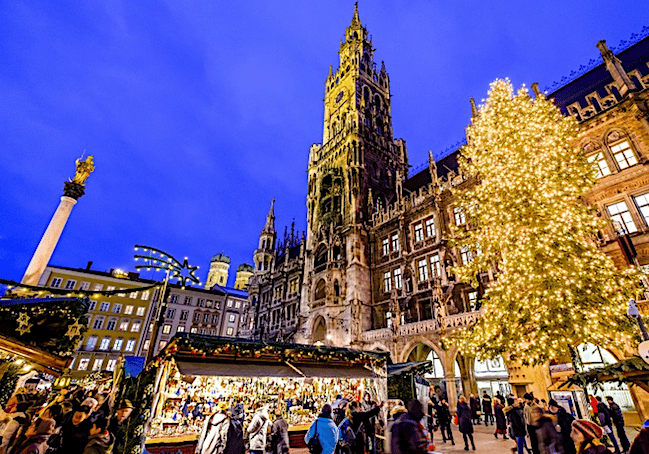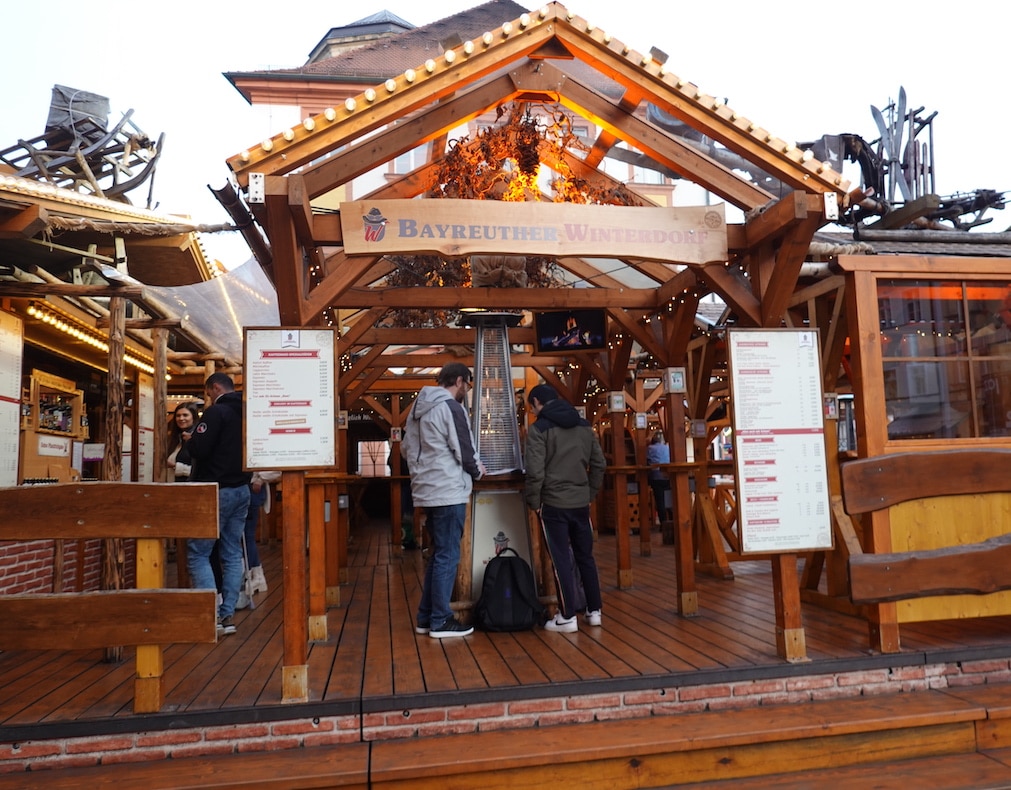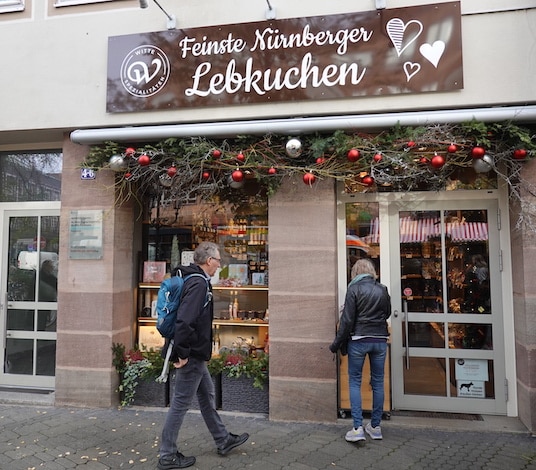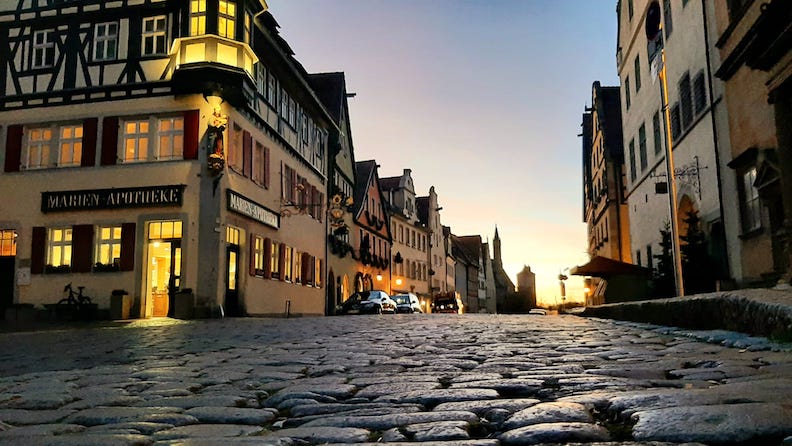
The main Christmas Market in Munich is located on the Marienplatz. Photo by Tourismus Nuernberg
By David DeVoss
There are more than 2.2 billion Christians throughout the world and during the month of December it often seems most of them are spending Christmas in Germany.
They come to walk respectfully through vaulted cathedrals where relics of ancient saints are entombed. Or visit palaces once belonging to Holy Roman Emperors. Some find their way to Bayreuth’s Margravial Opera House to marvel at the intricate Baroque carving and three-dimensional painting that make the 1750 building a UNESCO World Heritage site.
But if pressed to admit what really appeals to them about cold Decembers in Germany most visitors admit they come for the Christmas markets.
Today, there are nearly 100 of them across Germany. Berlin alone has 70. The one in Dresden dates back to 1434.
Europe’s Christmas markets are magical places. Bundled up in warm jackets with woolen scarves and mittens, people of all ages enjoy the sparkling lights, scents of evergreen and tastes of mulled wine, bratwurst and freshly baked gingerbread. Some markets provide miniature Ferris Wheels and merry-go-rounds for the children; others offer the chance to feed reindeer, listen to caroling church choirs and shop for distinctive gifts fashioned by local craftsmen.
This was supposed to be the winter that Germany buckled under the strain of Russian sanctions and soaring energy prices. After Russia cut off the supply of natural gas six months ago, some NATO diplomats anonymously predicted Germany would not have enough energy to heat homes, much less power open air markets. Winter temperatures combined with the closure of the Nord Stream pipeline would cause government leaders in Berlin to capitulate to Putin and restart trade with Moscow.

The Bayreuther Winterdorf comes alive in December when Bayreuth celebrates Christmas. These November patrons can still enjoy bratwurst and Glühwein without the crowds. Photo by David DeVoss
Instead of bowing to Russian blackmail, Germany imposed strict energy saving measures that most Germans have embraced. Town councils have dimmed streetlights, lowered the temperature in public buildings and requested ski resorts to run chairlifts more slowly. Most churches are turning down thermostats to as low as 45 degrees and asking members to donate blankets for use by elderly parishioners who need extra swaddling. Once illuminated by mood lighting, statues, fountains and the exteriors of some historic buildings now are dark at night.
Some Germans on social media compete to see who can keep their apartment heat off the longest. Others boast of doing away with hot showers in favor of wipe-downs with a warm washcloth.
Amazingly, all the forbearance and self-denial have worked. Energy used to power homes and businesses is down 25% from pre-pandemic levels, Germany’s gas storage facilities are 97% full. A new liquified natural gas (LNG) facility is set to open this January that will make the country even less dependent on Russian energy.
Germany’s Christmas markets are presently operating on a daily basis so don’t delay. In Bavaria’s Franconia region, the Bayreuther Winterdorf sells delicious sausages slathered with mustard paired with mulled wine. When asked if you want a shot of rum in your wine, say yes.
In Bamberg, an early medieval town that achieved UNESCO World Heritage protection in 1993, much of the Island District’s Old Town between the two arms of the Regnitz River is given over to pedestrian thoroughfares filled with shoppers meandering between booths selling German-made artifacts. People in Upper Franconia like their wine and beer, which in Bamberg is a smoked variety that tastes like sausage.

Nuremberg’s best gingerbread comes from a bakery close to the Frauenkirche on a street where the Children’s Market takes place during the month of December. Photo by David DeVoss
There is no prohibition against drinking in public and many tipplers will be drinking in small groups on sidewalks. You’ll note that all are holding glass mugs. Germany is serious about sustainability so don’t ask for a paper or plastic to-go cup. Built into the price of your beer is a deposit for the glass so don’t forget to return it for a refund.
Because of energy restrictions, Nuremberg won’t have decorative lighting on every street, but the market areas along Konigstrasse running from the Frauentor gate at the city wall to the 13th century Sebalduskirche on the other side of the Pegnitz River will be lighted as normal from 10 am to 10 pm. Try to be in the market area at the base of the Gothic 14th century Frauenkirche at noon when the chiming clock tower displays a mechanized set of Electors paying homage to the Holy Roman Emperor.

Rothenburg tries to maintain its medieval atmosphere by banning streetlights, neon, traffic lights and outdoor advertising in the old part of the city. Photo by David DeVoss
Lighting is essential for a medieval town like Rothenburg, which sits on a bluff above the Tauber River looking much as it did 900 years ago. Normally, the town’s Market Square in the heart of the Old Town would be ablaze with strings of lights. Not so this year. Rothenburg’s Christmas Market is largely illuminated by oil lamps and battery-powered lanterns brought by exhibitors. “The atmosphere is as festive as ever,” says city tourism official Robert Nehr, “but at night the market will glow much as it would have in medieval times. For those of us in Rothenburg, less definitely will be more.”![]()
David DeVoss is the editor of the East-West News Service. For additional information regarding European Christmas markets please see the December 2021 story Europe’s Christmas Markets Delight Holiday Travelers from all Regions and Religions.

